#Christian V
Explore tagged Tumblr posts
Text
What’s that elephant the Danes are wearing?

Tatler’s guide to the emblems and quirks of Denmark’s highest honour, the Order of the Elephant.
A curious little diamond-encrusted elephant, a blue sash, a gold collar – and sometimes a big flaming cape…Tatler looks into the history and tradition of Denmark's most privileged Order.
With Frederik X set to become sovereign of the Order as he becomes King on Sunday, you might see a few of these elephants around Copenhagen's royal palaces
By Isaac Zamet
12 January 2024
When Crown Prince Frederik becomes Frederik X of Denmark on Sunday, he will also replace his mother, Queen Margrethe II, as the sovereign of Denmark’s most ancient and distinguished order of chivalry, the Order of the Elephant.
Though it was officially refounded in 1693, the order dates all the way back to the 1400s, when it was established as a religious confraternity by a group of about fifty Danish knights.
In the 1400s, prior to the Reformation which gripped Europe and divided the church, such religious ‘clubs’ as the Order of the Elephant were common features of aristocratic life.
At the time of the Order of the Elephant's birth, Christian I was King of Denmark – and in fact, Norway and Sweden too, creating a personal union known as the Kalmar Union.
During this period, the emblem of the club was an image of the Virgin Mary holding her Son within a crescent moon.
This was hung from a collar formed of links in the shape of elephants.
The confraternity mutated over the centuries but endured a stifled period after the Reformation in which such clubs became suspect.

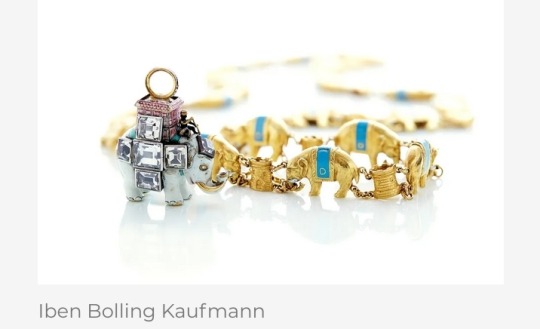
In 1580, Frederik II – eight Frederiks prior to our current Frederik – revived the order and replaced the medallion of the mother and child with an elephant (a Reformation-safe, Protestant approach – if a quirky one!).
But it was Christian V, in 1693, who gave the club its official statues and founding order.
At this time, it was scheduled as comprising 30 noble knights and one Grand Master (the King) along with his sons.
It was only in 1958 that the statutes were amended by Royal Ordinance to allow the ennoblement of women as members of the order.
Between 1580 and today, around 890 persons have been bestowed with the Order of the Elephant; with Queen Margrethe adding 68 people during her 40 year reign.
The recipients are almost always royal persons and foreign heads of state – though in a rare exception, the order was given to a commoner in 2000.
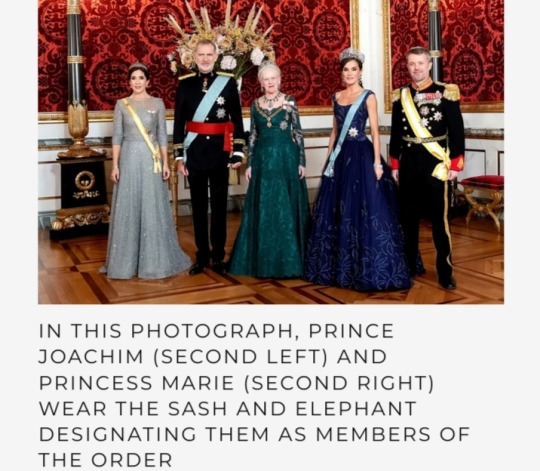
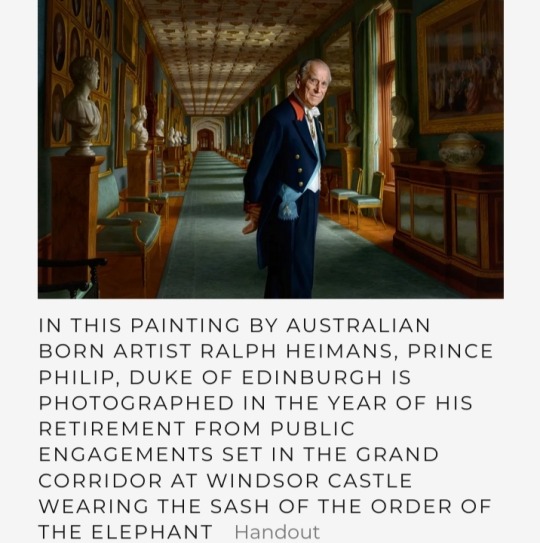
This was the deceased shipping magnate, Mærsk Mc-Kinney Møller, who was recognised for exceptional contribution to Danish economic strength and Danish society.
Those unfamiliar with the man himself will surely recognise his name from the famous shipping containers.
The A.P. Møller – Mærsk group was actually founded in 1904 by his father. It is now worth $81bn dollars.
At the time of Møller’s membership of the order, he was the only non-royal and non-head of state to hold the honour; though it had previously been held by the pioneering nuclear physicist, Niels Bohr.
Membership of the order comes with possession of its rather eye-catching elephantine emblem.
The elephant is made of white-enamelled gold with blue housings and is about 5cm high.

On its back, the elephant bears a tower of pink enamelled masonry (a design originally intended to reflect the howdah compartments of the Indian subcontinent).
A number of large cut diamonds adorn the elephant, along with a crowned monogram of the monarch reigning when it was made.
One wonders, then, when the first Frederikian elephants will be carved.
At the top of the tower on the elephant’s back sits a gold ring, from which the badge can be hung from the collar or tied to a sash.
On the elephant's back sits a turbaned ‘moor mahout.’
It should be noted that some would regard such a depiction as an exoticising caricature.
Others would regard its appearance merely as an expression of an historical perspective.
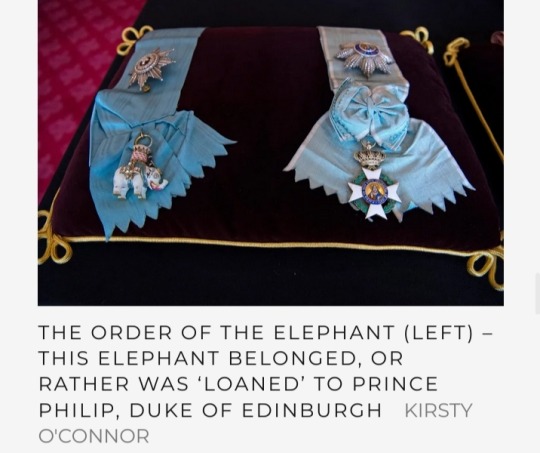
One striking detail about the circulation of the elephants is that each Order of the Elephant is – in principle – on loan and must be returned to the Chapter of the Royal Orders of Chivalry when a member of the Order has passed away.
This rather quaint custom means that elephants are inherited and used several times by different members of the order, with some dating back hundreds of years.
Interestingly, the done thing is not to disclose to whom an Elephant has previously been given – though there are some traditional lines of inheritance.
For example, the elephant recently bestowed on Prince Christian belonged previously to his grandfather, Prince Henrik.
This handing over was always to be, on the basis of a traditional line of inheritance.
There are two exceptional elephants which have eluded the rule of the ‘loan’ – one remains in the Chancellery Museum at Paris and a second remains on display at the Dwight Eisenhower Presidential Library in the US.
Another beautiful quirk of membership of the Order is that a member’s coat of arms is always painted and subsequently hung in the Knight’s Chapel at Frederiksborg Castle in Hillerød.
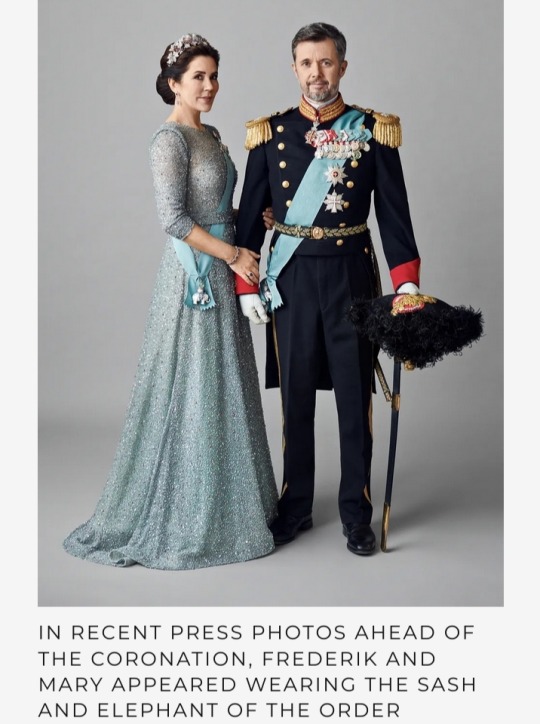
As to when the elephants come out to play, there are some rather interesting traditions concerning how and when to wear them.
The Order of the Elephant has three festival days: new year’s day, the monarch’s birthday, and the birthday of Valdemar the Victorious, which, if you didn’t know is on June 28.
On these festival days, the Order of the Elephant is worn on the chest on a gold chain link collar, with links shaped as towers and elephants.
The collar sits on each shoulder. On other important occasions, the order is worn on a bright blue sash with a breast star.
The star of the order is an eight-pointed silver star with smooth rays; at its centre sits an enameled red disc with a white cross, surrounded by a laurel wreath in silver.
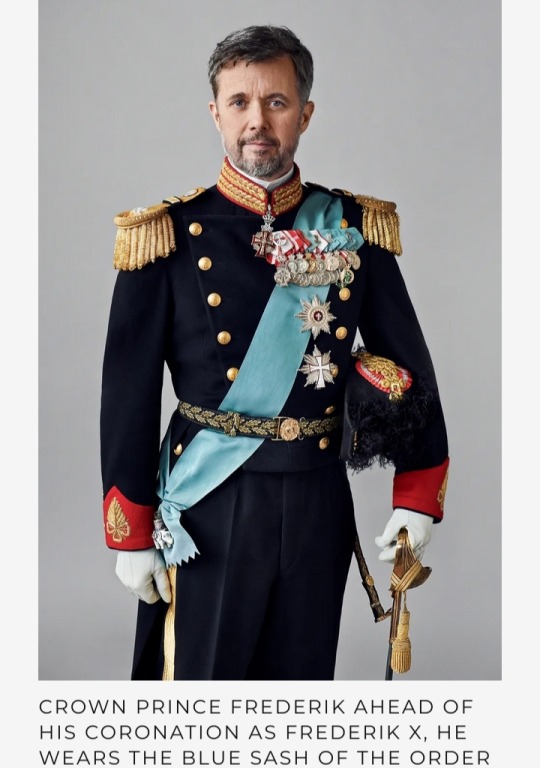

#Frederik X#Queen Margrethe II#Monarchy of Denmark#Danish Royal Family#House of Glücksburg#Christian I#Kalmar Union#Order of the Elephant#Frederik II#Christian V#Mærsk Mc-Kinney Møller#Frederikian elephants#Chancellery Museum#Dwight Eisenhower Presidential Library#Knight’s Chapel#Frederiksborg Castle#Crown Prince Christian of Denmark#Queen Mary of Denmark
35 notes
·
View notes
Text

am i my brother’s keeper?
#idk if this makes sense but#yeag#originally was gonna have the solvers projectors reflecting on her screen but couldn’t get it to look good so cyn shadow it is#murder drones#tw blood#cw blood#it’s oil but#better safe than sorry#christianity tw#religious themes tw#pastels art tag#serial designation v#murder drones v#md v#cyn#md cyn#murder drones cyn#n and j are there too but I won’t tag them#note that I’m not. Christian or catholic or any of that#was just inspired by the croaker verse of all things#murder drones fanart
179 notes
·
View notes
Text






christian bale icons
like or reblog if you use these and no reposts please 💕
tap here to request
american psycho icons here and here
#christian bale#christian bale icons#christian bale wallpaper#batman begins wallpaper#batman begins#the dark knight#dark knight#bruce wayne#bruce wayne icons#batman#batman icons#batman wallpaper#equilibrium#the prestige#american psycho#patrick bateman#patrick bateman icons#bateman#patrick bateman wallpaper#american hustle#little women#little women laurie#laurie#batman v superman#christian bale x reader#batman x reader#bruce wayne x reader#dc comics#dcu#dc icons
194 notes
·
View notes
Text

One of the most durable myths in recent history is that the religious right, the coalition of conservative evangelicals and fundamentalists, emerged as a political movement in response to the U.S. Supreme Court’s 1973 Roe v. Wade ruling legalizing abortion. The tale goes something like this: Evangelicals, who had been politically quiescent for decades, were so morally outraged by Roe that they resolved to organize in order to overturn it.

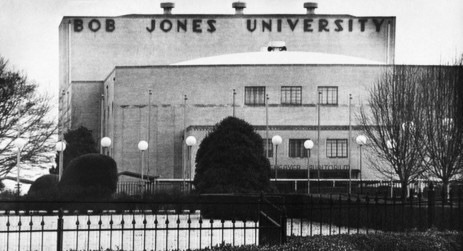
This myth of origins is oft repeated by the movement’s leaders. In his 2005 book, Jerry Falwell, the firebrand fundamentalist preacher, recounts his distress upon reading about the ruling in the Jan. 23, 1973, edition of the Lynchburg News: “I sat there staring at the Roe v. Wade story,” Falwell writes, “growing more and more fearful of the consequences of the Supreme Court’s act and wondering why so few voices had been raised against it.” Evangelicals, he decided, needed to organize.
Some of these anti- Roe crusaders even went so far as to call themselves “new abolitionists,” invoking their antebellum predecessors who had fought to eradicate slavery.
But the abortion myth quickly collapses under historical scrutiny. In fact, it wasn’t until 1979—a full six years after Roe—that evangelical leaders, at the behest of conservative activist Paul Weyrich, seized on abortion not for moral reasons, but as a rallying-cry to deny President Jimmy Carter a second term. Why? Because the anti-abortion crusade was more palatable than the religious right’s real motive: protecting segregated schools. So much for the new abolitionism.
Today, evangelicals make up the backbone of the pro-life movement, but it hasn’t always been so. Both before and for several years after Roe, evangelicals were overwhelmingly indifferent to the subject, which they considered a “Catholic issue.” In 1968, for instance, a symposium sponsored by the Christian Medical Society and Christianity Today, the flagship magazine of evangelicalism, refused to characterize abortion as sinful, citing “individual health, family welfare, and social responsibility” as justifications for ending a pregnancy. In 1971, delegates to the Southern Baptist Convention in St. Louis, Missouri, passed a resolution encouraging “Southern Baptists to work for legislation that will allow the possibility of abortion under such conditions as rape, incest, clear evidence of severe fetal deformity, and carefully ascertained evidence of the likelihood of damage to the emotional, mental, and physical health of the mother.” The convention, hardly a redoubt of liberal values, reaffirmed that position in 1974, one year after Roe, and again in 1976.
When the Roe decision was handed down, W. A. Criswell, the Southern Baptist Convention’s former president and pastor of First Baptist Church in Dallas, Texas—also one of the most famous fundamentalists of the 20th century—was pleased: “I have always felt that it was only after a child was born and had a life separate from its mother that it became an individual person,” he said, “and it has always, therefore, seemed to me that what is best for the mother and for the future should be allowed.”
Although a few evangelical voices, including Christianity Today magazine, mildly criticized the ruling, the overwhelming response was silence, even approval. Baptists, in particular, applauded the decision as an appropriate articulation of the division between church and state, between personal morality and state regulation of individual behavior. “Religious liberty, human equality and justice are advanced by the Supreme Court abortion decision,” wrote W. Barry Garrett of Baptist Press.
So what then were the real origins of the religious right? It turns out that the movement can trace its political roots back to a court ruling, but not Roe v. Wade.
In May 1969, a group of African-American parents in Holmes County, Mississippi, sued the Treasury Department to prevent three new whites-only K-12 private academies from securing full tax-exempt status, arguing that their discriminatory policies prevented them from being considered “charitable” institutions. The schools had been founded in the mid-1960s in response to the desegregation of public schools set in motion by the Brown v. Board of Education decision of 1954. In 1969, the first year of desegregation, the number of white students enrolled in public schools in Holmes County dropped from 771 to 28; the following year, that number fell to zero.
In Green v. Kennedy (David Kennedy was secretary of the treasury at the time), decided in January 1970, the plaintiffs won a preliminary injunction, which denied the “segregation academies” tax-exempt status until further review. In the meantime, the government was solidifying its position on such schools. Later that year, President Richard Nixon ordered the Internal Revenue Service to enact a new policy denying tax exemptions to all segregated schools in the United States. Under the provisions of Title VI of the Civil Rights Act, which forbade racial segregation and discrimination, discriminatory schools were not—by definition—“charitable” educational organizations, and therefore they had no claims to tax-exempt status; similarly, donations to such organizations would no longer qualify as tax-deductible contributions.
On June 30, 1971, the United States District Court for the District of Columbia issued its ruling in the case, now Green v. Connally (John Connally had replaced David Kennedy as secretary of the Treasury). The decision upheld the new IRS policy: “Under the Internal Revenue Code, properly construed, racially discriminatory private schools are not entitled to the Federal tax exemption provided for charitable, educational institutions, and persons making gifts to such schools are not entitled to the deductions provided in case of gifts to charitable, educational institutions.”
Paul Weyrich, the late religious conservative political activist and co-founder of the Heritage Foundation, saw his opening.
In the decades following World War II, evangelicals, especially white evangelicals in the North, had drifted toward the Republican Party—inclined in that direction by general Cold War anxieties, vestigial suspicions of Catholicism and well-known evangelist Billy Graham’s very public friendship with Dwight Eisenhower and Richard Nixon. Despite these predilections, though, evangelicals had largely stayed out of the political arena, at least in any organized way. If he could change that, Weyrich reasoned, their large numbers would constitute a formidable voting bloc—one that he could easily marshal behind conservative causes.
“The new political philosophy must be defined by us [conservatives] in moral terms, packaged in non-religious language, and propagated throughout the country by our new coalition,” Weyrich wrote in the mid-1970s. “When political power is achieved, the moral majority will have the opportunity to re-create this great nation.” Weyrich believed that the political possibilities of such a coalition were unlimited. “The leadership, moral philosophy, and workable vehicle are at hand just waiting to be blended and activated,” he wrote. “If the moral majority acts, results could well exceed our wildest dreams.”
But this hypothetical “moral majority” needed a catalyst—a standard around which to rally. For nearly two decades, Weyrich, by his own account, had been trying out different issues, hoping one might pique evangelical interest: pornography, prayer in schools, the proposed Equal Rights Amendment to the Constitution, even abortion. “I was trying to get these people interested in those issues and I utterly failed,” Weyrich recalled at a conference in 1990.
The Green v. Connally ruling provided a necessary first step: It captured the attention of evangelical leaders , especially as the IRS began sending questionnaires to church-related “segregation academies,” including Falwell’s own Lynchburg Christian School, inquiring about their racial policies. Falwell was furious. “In some states,” he famously complained, “It’s easier to open a massage parlor than a Christian school.”
One such school, Bob Jones University—a fundamentalist college in Greenville, South Carolina—was especially obdurate. The IRS had sent its first letter to Bob Jones University in November 1970 to ascertain whether or not it discriminated on the basis of race. The school responded defiantly: It did not admit African Americans.
Although Bob Jones Jr., the school’s founder, argued that racial segregation was mandated by the Bible, Falwell and Weyrich quickly sought to shift the grounds of the debate, framing their opposition in terms of religious freedom rather than in defense of racial segregation. For decades, evangelical leaders had boasted that because their educational institutions accepted no federal money (except for, of course, not having to pay taxes) the government could not tell them how to run their shops—whom to hire or not, whom to admit or reject.
The Civil Rights Act, however, changed that calculus.
(continue reading)
#politics#republicans#paul weyrich#abortion#religious riech#bob jones university#jerry falwell#christian nationalism#white supremacy#desegregation#project 2025#roe v wade#reproductive rights#reproductive justice#healthcare#brown v board of education#heritage foundation#moral majority#religious freedom#religion
194 notes
·
View notes
Text

#is this anything lmao#what i would give for a hook v christian cage fight rn#aew#taz#send hook#730 hook
85 notes
·
View notes
Text

Hate to break it to you, fellas, but I’m pretty sure the night is taken in this town.
(Detective Comics #1087)
#detective comics#nightwing#dick grayson#intimidating#uh oh#gotham nocturne#gotham#ram v#Christian Duce#stefano raffaele#dc comics#comics#2020s comics
60 notes
·
View notes
Text
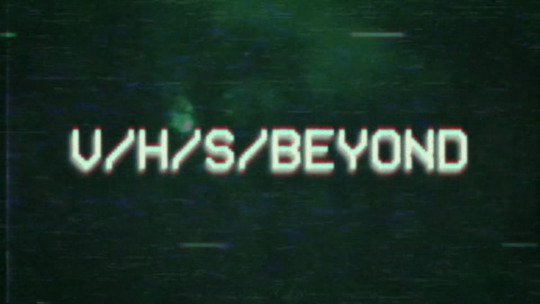

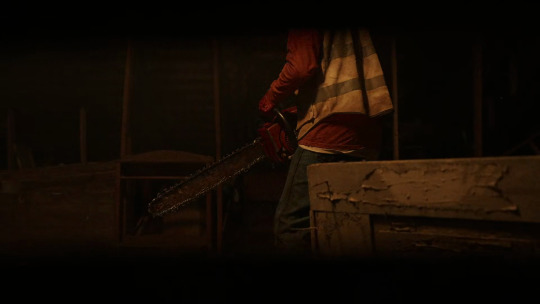




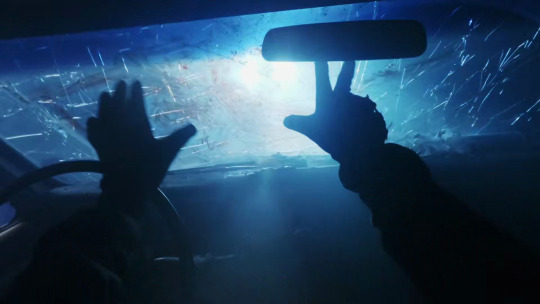


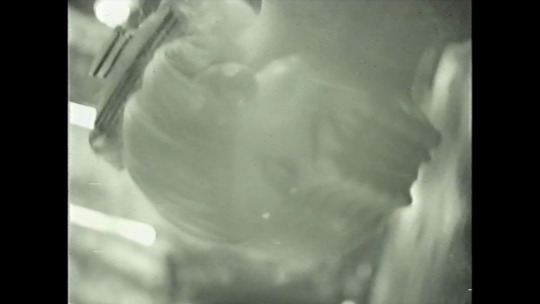

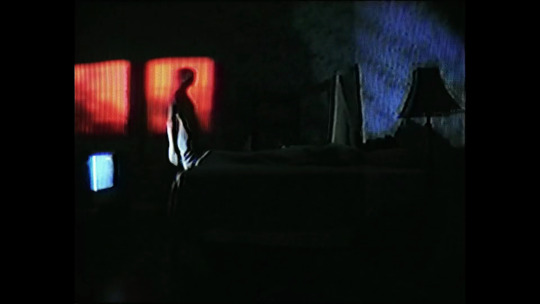
V/H/S/BEYOND (2024)
Directors: Jordan Downey, Christian and Justin Long, Justin Martinez, Virat Pal, Kate Siegel & Jay Cheel Cinematography: Tapan Basu, Alexander Chinnici, Mike McLaughlin, Kevin Stewart
#vhs beyond#vhs#v/h/s#v/h/s/beyond#shudder#found footage#horror#horror movies#horror scifi#horror vhs#kate siegel#justin long#jordan downey#christian long#justin martinez#virat pal#jay cheel#horror anthology#anthologies#bloody disgusting#vhs aesthetic#cinematography#movie screencaps#movie screenshots#film screencaps#film screenshots#movie frames#screenshots#screencaps#movie screengrabs
56 notes
·
View notes
Text

#Politics#fascist#GOP#right wing terrorism#right wing extremism#gop fascists#christofascists#evangelicals#conservative christians#white supremacists#maga#republicans#stupid people#Republicans are Fascist#Vote Blue#Get Out The Vote#Vote Democratic#conservatives#republican#far right#rethuglicans#magats#Roe V Wade#Supreme Court#Body Autonomy#My Body My Choice#Choice#Abortion Rights
162 notes
·
View notes
Text







God blesss😮💨
#he so fine#vinnie hacker#hot af tbh#tiktokboys#vinnie#hot boi#vincent hacker#jordan riki#michael cimino#nrl#derek luh#asa germann#gen v#central cee#christian yu#jung jinhyeong#Jay the whimsical
322 notes
·
View notes
Text



Cassandra Cain is the best!
#dc comics#dc heroes#dc women#batman#batman family#bat family#batgirl#cassandra cain#Nightwing#dick grayson#ram v#francesco francavilla#stefano raffaele#Luis Guerrero#christian duce#detective comics
67 notes
·
View notes
Text

Henry V (1989). In the midst of the Hundred Years War, the young King Henry V of England embarks on the conquest of France in 1415.
Kenneth Branagh has truly been collecting Shakespeare roles like infinity stones for more than 30 years. 7/10.
#henry v#1989#Oscars 62#Nom: Director#Nom: Actor#Nom: Costume#Won: Costume#kenneth branagh#william shakespeare#derek jacobi#judi dench#christian bale#emma thompson#england#english#1400s#monarchy#war#hundred years war#7/10
60 notes
·
View notes
Text
okay so i think maybe catholics are insane. BUT today at in-law christmas. one of my aunts-in-law BROUGHT UP good omens, talking about how she loved it and that season two was devastating and how she's so excited for season three. actually literally said "i need it to end HAPPY!"
i felt like i was caught in a real life version of an old obviously fake superwholock tumblr post. this 40-something straight catholic woman loves the gay sacrilege show. girl what? i wouldn't have believed it if my wife wasn't there to confirm. i was so excited actually......... i recommended she watch wilde and bright young things bc she loooooves michael and i love that for her, i want her to see his twinkiest roles, LIVE FREE KELLY,,,
if we ever come out as not a cishet couple to that family i swearrrrr im telling her first. she would clap for us i think
#good omens#v conservative family#the think im in a good christian cishet marriage#it's so funny to me. personally. im dripping in faggy mannerisms i Look Gay.#and they think im a straight woman? jjekkddk. okay.
368 notes
·
View notes
Text
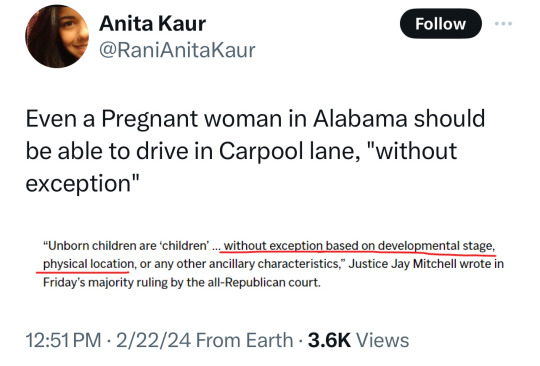




This is what taking Alabama’s asinine ruling on embryos to its natural conclusion looks like
#politics#alabama#republicans#embryos#christian nationalism#abortion#reproductive rights#jay mitchell#religious reich#reproductive justice#healthcare#roe v wade#fetal personhood#justice jay mitchell#embrionics#ivf#criminalizing ivf#ivf treatment#christofascism#in vitro fertilization
278 notes
·
View notes
Photo
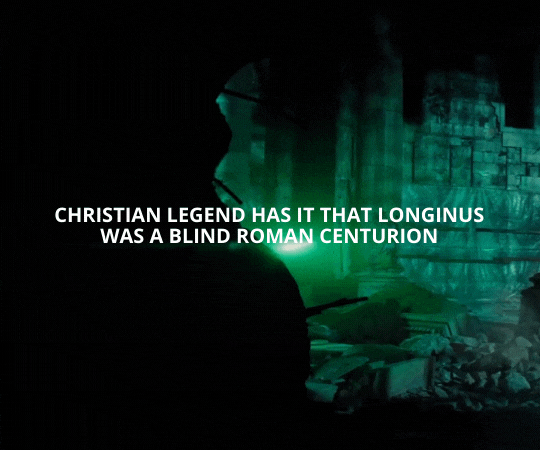

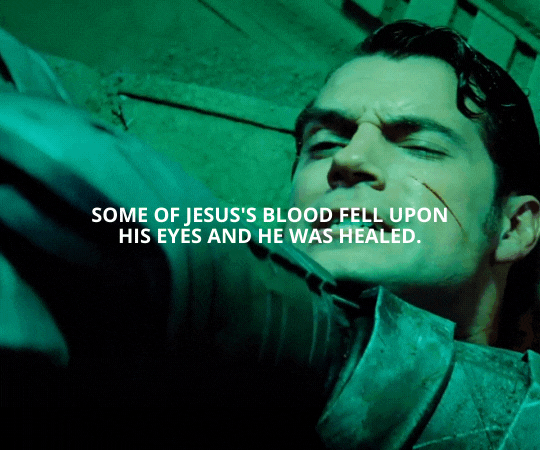

#batman v supeman: dawn of justice#bvs#bvsedit#dcedit#dceuedit#dcmultiverse#dcfilmblr#dcfilms#filmedit#doyouevenfilm#cinematv#userzsofia#userstream#baffleckedit#hcavilledit#superman#batman#yes i came back with another bvs + christian symbolism gifset lol#*#quote by malcolm godwin
174 notes
·
View notes
Text
actually i'm still thinking about the moral orel finale.

he has a cross on his wall. do you know how much i think about that bc it's a lot.
a lot of stories ((auto)biographical or fictional) centering escape from abusive/fundamentalist christianity result in the lead characters leaving behind christianity entirely. and that makes complete sense! people often grow disillusioned with the associated systems and beliefs, and when it was something used to hurt them or something so inseparable from their abuse that they can't engage with it without hurting, it makes total sense that they would disengage entirely. and sometimes they just figure out that they don't really believe in god/a christian god/etc. a healthy deconstruction process can sometimes look like becoming an atheist or converting to another religion. it's all case by case. (note: i'm sure this happens with other religions as well, i'm just most familiar with christian versions of this phenomenon).
but in orel's case, his faith was one of the few things that actually brought him comfort and joy. he loved god, y'know? genuinely. and he felt loved by god and supported by him when he had no one else. and the abuses he faced were in how the people in his life twisted religion to control others, to run away from themselves, to shield them from others, etc. and often, orel's conflicts with how they acted out christianity come as a direct result of his purer understanding of god/jesus/whatever ("aren't we supposed to be like this/do that?" met with an adult's excuse for their own behavior or the fastest way they could think of to get orel to leave them alone (i.e. orel saying i thought we weren't supposed to lie? and clay saying uhhh it doesn't count if you're lying to yourself)). the little guy played catch with god instead of his dad, like.. his faith was real, and his love was real. and i think it's a good choice to have orel maintain something that was so important to him and such a grounding, comforting force in the midst of. All That Stuff Moralton Was Up To/Put Him Through. being all about jesus was not the problem, in orel's case.
and i know i'm mostly assuming that orel ended up in a healthier, less rigid version of christianity, but i feel like that's something that was hinted at a lot through the series, that that's the direction he'd go. when he meditates during the prayer bee and accepts stephanie's different way to communicate, incorporating elements of buddhism into his faith; when he has his I AM A CHURCH breakdown (removing himself from the institution and realizing he can be like,, the center of his own faith? taking a more individualistic approach? but Truly Going Through It at the same time), his acceptance (...sometimes) of those who are different from him and condemned by the adults of moralton (stephanie (lesbian icon stephanie my beloved), christina (who's like. just a slightly different form of fundie protestant from him), dr chosenberg (the jewish doctor from otherton in holy visage)). his track record on this isn't perfect, but it gets better as orel starts maturing and picking up on what an absolute shitfest moralton is. it's all ways of questioning the things he's been taught, and it makes sense that it would lead to a bigger questioning as he puts those pieces together more. anyway i think part of his growth is weeding out all the lost commandments of his upbringing and focusing on what faith means to him, and what he thinks it should mean. how he wants to see the world and how he wants to treat people and what he thinks is okay and right, and looking to religion for guidance in that, not as like. a way to justify hurting those he's afraid or resentful of, as his role models did.
he's coming to his own conclusions rather than obediently, unquestioningly taking in what others say. but he's still listening to pick out the parts that make sense to him. (edit/note: and it's his compassion and his faith that are the primary motivations for this questioning and revisal process, both of individual cases and, eventually, the final boss that is christianity.) it makes perfect sense as the conclusion to his character arc and it fits the overall approach of the show far better. it's good is what i'm saying.
and i think it's important to show that kind of ending, because that's a pretty common and equally valid result of deconstruction. and i think it cements the show's treatment of christianity as something that's often (and maybe even easily) exploited, but not something inherently bad. something that can be very positive, even. guys he even has a dog he's not afraid of loving anymore. he's not afraid of loving anyone more than jesus and i don't think it's because he loves this dog less than bartholomew (though he was probably far more desperate for healthy affection and companionship when he was younger). i think it's because he figures god would want him to love that dog. he's choosing to believe that god would want him to love and to be happy and to be kind. he's not afraid of loving in the wrong way do you know how cool that is he's taking back control he's taking back something he loves from his abusers im so normal
#i had a really big fundie snark phase a year or two ago so that's part of like. this. but im still not used to actually talking about#religious stuff so if it reads kinda awkwardly uhh forgive me orz idk#maybe it sounds dumb but i like that the message isn't 'religion is evil'. it easily could have been. but i think the show's points about#how fundie wasp culture in particular treats christianity and itself and others would be less poignant if they were like. and jesus sucks#btw >:] like. this feels more nuanced to me. i guess there's probably a way to maintain that nuance with an ultimately anti-christian#piece of media but i think it'd be like. wayy harder and it's difficult for me to imagine that bc i think a lot of it would bleed out into#the tone. + why focus on only These christians when They're All also bad? so you'd get jokes about them in general#and i think that's kinda less funny than orel and doughy screaming and running from catholics lsdkjfldksj#i think the specificity makes it more unique and compelling as comedy and as commentary. but that's just me#like moralton represents a very particular kind of christian community (namely a middle class fundie wasp nest)#you're not gonna be able to get in the weeds as much if you're laughing at/criticizing all christians. but they accomplish it so thoroughly#and WELL in morel and i think that's because it chose a smaller target it can get to dissect more intimately. anyway#moral orel#orel puppington#(OH also when i say wasp here i mean WASP the acronym. as in white anglo-saxon protestsant. in case the term's new to anyone <3)#maybe it's also relevant to say that i'm kindaaaaaaaa loosely vaguely nonspecifically christian. so there's my bias revealed#i was never raised like orel but i like to think i get some of what's going on in there y'know. in that big autistic head of his#but it's not like i can't handle anti-christian/anti-religious media/takes. i'm a big boy and also i v much get why it's out there yknow#christianity in specific has a lot of blood on its hands from its own members and from outsiders and people have a right to hate it for tha#but religion in all its forms can be positive and i appreciate the nuance. like i've said around 20 times. yeah :) <3#(<- fighting for my life to explain things even though my one job is to be the explainer)
77 notes
·
View notes
Text

New Gods #2 variant cover by Christian Ward
48 notes
·
View notes